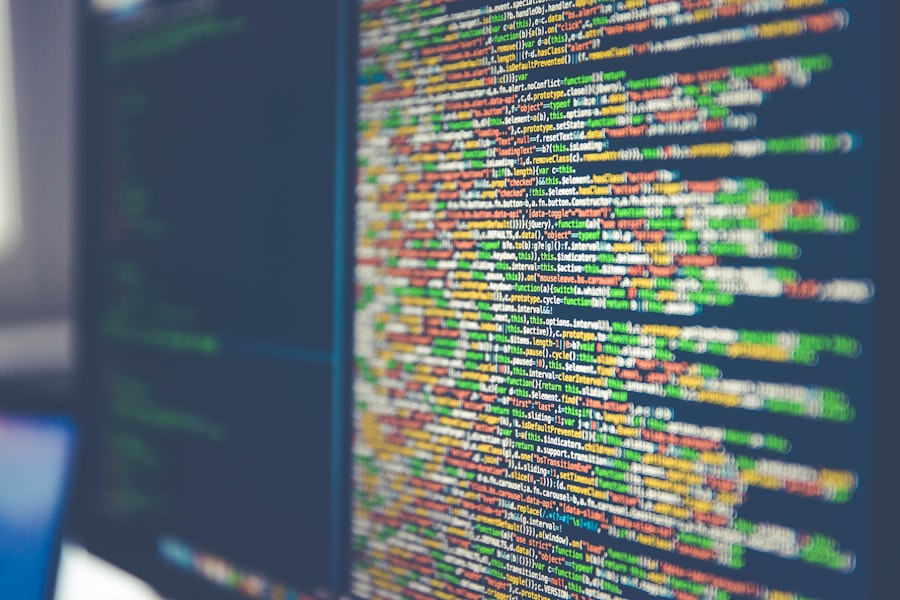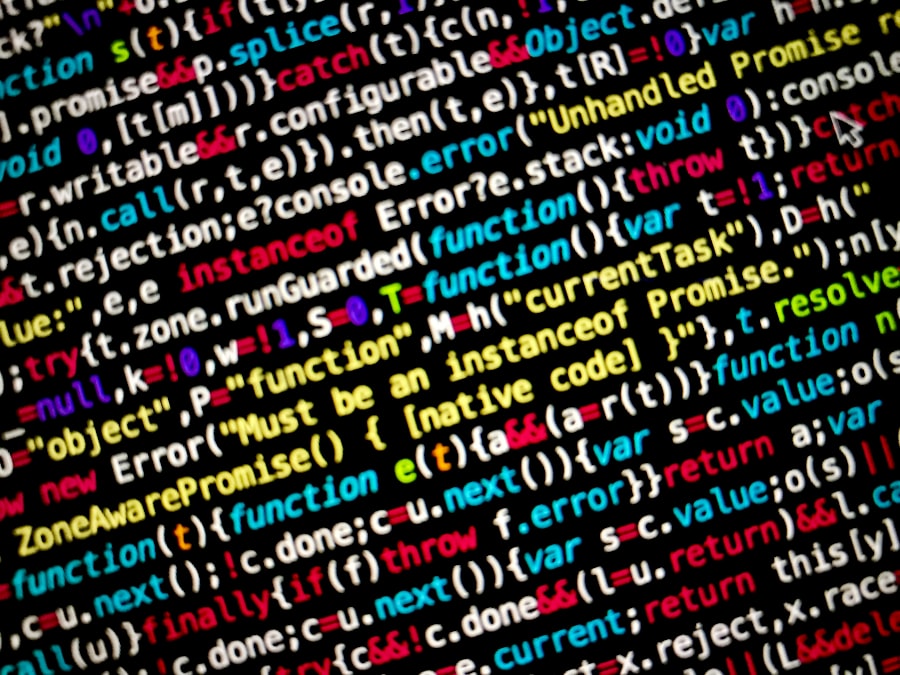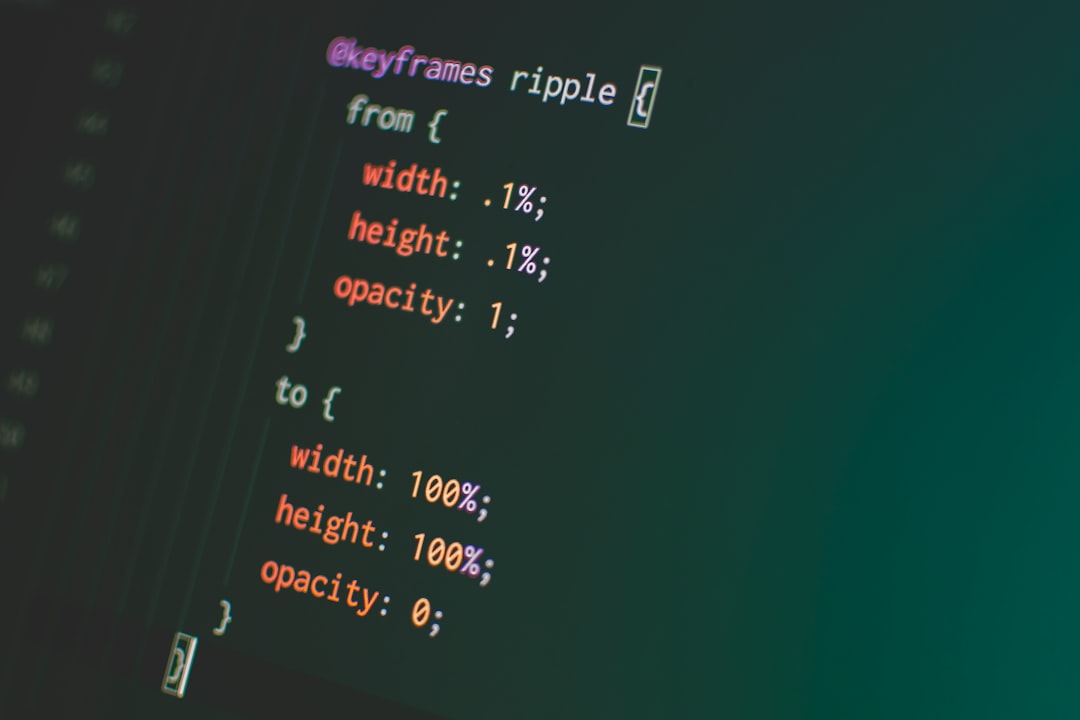Function prototypes are a fundamental aspect of the C programming language, serving as a declaration of a function’s interface before its actual implementation.
This allows for type checking during compilation, which helps catch errors early in the development process.
For instance, if a function is declared to take an integer and a float as parameters but is called with two integers, the compiler will generate an error, alerting the programmer to the mismatch. The syntax for a function prototype is straightforward. It typically appears at the beginning of a source file or in a header file, allowing it to be included in multiple source files.
By declaring this prototype before any calls to `add`, the compiler can ensure that all calls to this function adhere to the specified signature. This practice not only enhances code readability but also facilitates better organization of code, especially in larger projects where functions may be defined in separate files.
Key Takeaways
- Function prototypes in C provide a way to declare the function signature before its actual implementation, allowing the compiler to perform type checking and ensure correct usage.
- When passing arguments to functions in C, it is important to consider the method of passing (by value or by reference) and the potential impact on memory usage and performance.
- Recursion in C allows a function to call itself, providing an elegant solution for solving problems that can be broken down into smaller, similar sub-problems.
- Writing efficient functions in C involves considerations such as minimizing memory usage, reducing unnecessary computations, and optimizing algorithmic complexity.
- Handling variable-length argument lists in C functions can be achieved using the stdarg.h header and functions like va_start, va_arg, and va_end, providing flexibility for functions with a varying number of arguments.
- Advanced techniques for function pointers in C include using them to create callback functions, implementing polymorphism, and dynamically selecting functions at runtime for increased flexibility and modularity.
Passing Arguments to Functions in C
Pass-by-Value
The most common method is pass-by-value, where a copy of the argument’s value is passed to the function. This means that any modifications made to the parameter within the function do not affect the original argument. For example, consider a function that attempts to modify an integer:
“`c
void increment(int num) {
num++;
}
“`
If this function is called with an integer variable, the original variable remains unchanged after the function call. This behavior is crucial for maintaining data integrity when working with functions that should not alter their input parameters.
Pass-by-Reference
On the other hand, pass-by-reference allows functions to modify the original variable by passing its address instead of its value. This is achieved using pointers. When a pointer is passed to a function, any changes made to the dereferenced pointer will affect the original variable. For instance:
“`c
void increment(int *num) {
(*num)++;
}
“`
In this case, if we call `increment(&myVar);`, where `myVar` is an integer variable, the value of `myVar` will be incremented directly.
Use Cases for Pass-by-Reference
This technique is particularly useful when dealing with large data structures or when multiple return values are needed from a function.
Exploring the Magic of Recursion in C

Recursion is a powerful programming technique where a function calls itself to solve smaller instances of the same problem. This approach can lead to elegant solutions for complex problems, such as calculating factorials or traversing data structures like trees. A classic example of recursion is the calculation of factorials: “`c
int factorial(int n) {
if (n == 0) {
return 1;
}
return n * factorial(n – 1);
}
“` In this example, the `factorial` function calls itself with decremented values until it reaches the base case of `n == 0`.
Each recursive call adds a layer to the call stack, and once the base case is reached, the stack unwinds, returning the final result. While recursion can simplify code and improve readability, it also comes with potential downsides, such as increased memory usage due to stack frames and the risk of stack overflow for deep recursion. To mitigate these issues, programmers often employ techniques such as tail recursion or iterative solutions when appropriate.
Tail recursion occurs when a recursive call is the last operation in a function, allowing some compilers to optimize it into an iterative loop, thus reducing stack usage. However, not all compilers support this optimization, so understanding when to use recursion versus iteration is crucial for efficient programming.
Best Practices for Writing Efficient Functions in C
| Best Practices for Writing Efficient Functions in C |
|---|
| 1. Use appropriate data types to minimize memory usage |
| 2. Minimize the use of global variables |
| 3. Avoid unnecessary function calls and use inline functions when possible |
| 4. Optimize loops and minimize the use of nested loops |
| 5. Use bitwise operations for efficient manipulation of data |
| 6. Minimize the use of dynamic memory allocation |
| 7. Profile and benchmark code to identify performance bottlenecks |
Writing efficient functions in C requires careful consideration of several factors, including algorithm complexity, memory usage, and code readability. One of the primary best practices is to minimize unnecessary computations within functions. For instance, if a function performs calculations that can be cached or reused, implementing memoization can significantly enhance performance by avoiding redundant calculations.
Another important aspect is to keep functions focused and concise. A well-defined function should perform a single task or operation, making it easier to understand and maintain. This principle aligns with the Single Responsibility Principle from software engineering, which states that a module or class should have one reason to change.
By adhering to this principle, developers can create modular code that is easier to test and debug. Additionally, using appropriate data types can lead to more efficient memory usage and faster execution times. For example, choosing `float` over `double` when high precision is not required can save memory and improve performance in applications where large arrays are involved.
Furthermore, understanding how different data structures impact performance is essential; for instance, using linked lists instead of arrays can provide better performance for certain operations like insertions and deletions.
Handling Variable-Length Argument Lists in C Functions
C provides a mechanism for functions to accept variable-length argument lists through the use of macros defined in `
The `va_start` macro initializes a variable argument list, while `va_arg` retrieves each argument from that list based on its expected type. Finally, `va_end` cleans up after processing the arguments. Here’s an example of how one might implement a simple sum function that accepts any number of integers: “`c
#include
va_list args;
int total = 0; va_start(args, count);
for (int i = 0; i < count; i++) {
total += va_arg(args, int);
}
va_end(args); return total;
}
“` In this example, `sum` takes an integer `count` followed by a variable number of integer arguments.
The function initializes the argument list with `va_start`, iterates through each argument using `va_arg`, and accumulates their sum before returning it. This flexibility allows developers to create more dynamic and versatile functions but requires careful handling to avoid errors such as type mismatches or accessing beyond the provided arguments.
Advanced Techniques for Function Pointers in C

Declaring and Assigning Function Pointers
To declare a function pointer, you specify the return type and parameter types of the target function. For example: `int (*operation)(int, int);` This declaration creates a pointer named `operation` that can point to any function taking two integers as parameters and returning an integer. To assign a function to this pointer, you simply set it equal to the function’s name without parentheses: `operation = add;` Assuming `add` is defined as `int add(int, int);`.
Invoking Functions through Pointers
Once assigned, you can invoke the function through the pointer using either dereferencing or direct invocation syntax: `int result = (*operation)(5, 3);` or `int result = operation(5, 3);`. Function pointers are particularly powerful when combined with structures or arrays.
Applications and Benefits of Function Pointers
For instance, you could create an array of function pointers representing different mathematical operations (addition, subtraction, multiplication) and invoke them based on user input or other conditions dynamically. This approach enhances modularity and allows for cleaner code organization by separating logic from implementation details. Moreover, using function pointers facilitates implementing design patterns such as strategy patterns or command patterns in C programming. By defining interfaces through function pointers, developers can create interchangeable components that enhance code reusability and maintainability while adhering to principles like separation of concerns.
If you are interested in exploring the concept of recursion further, you may find the article on





















+ There are no comments
Add yours